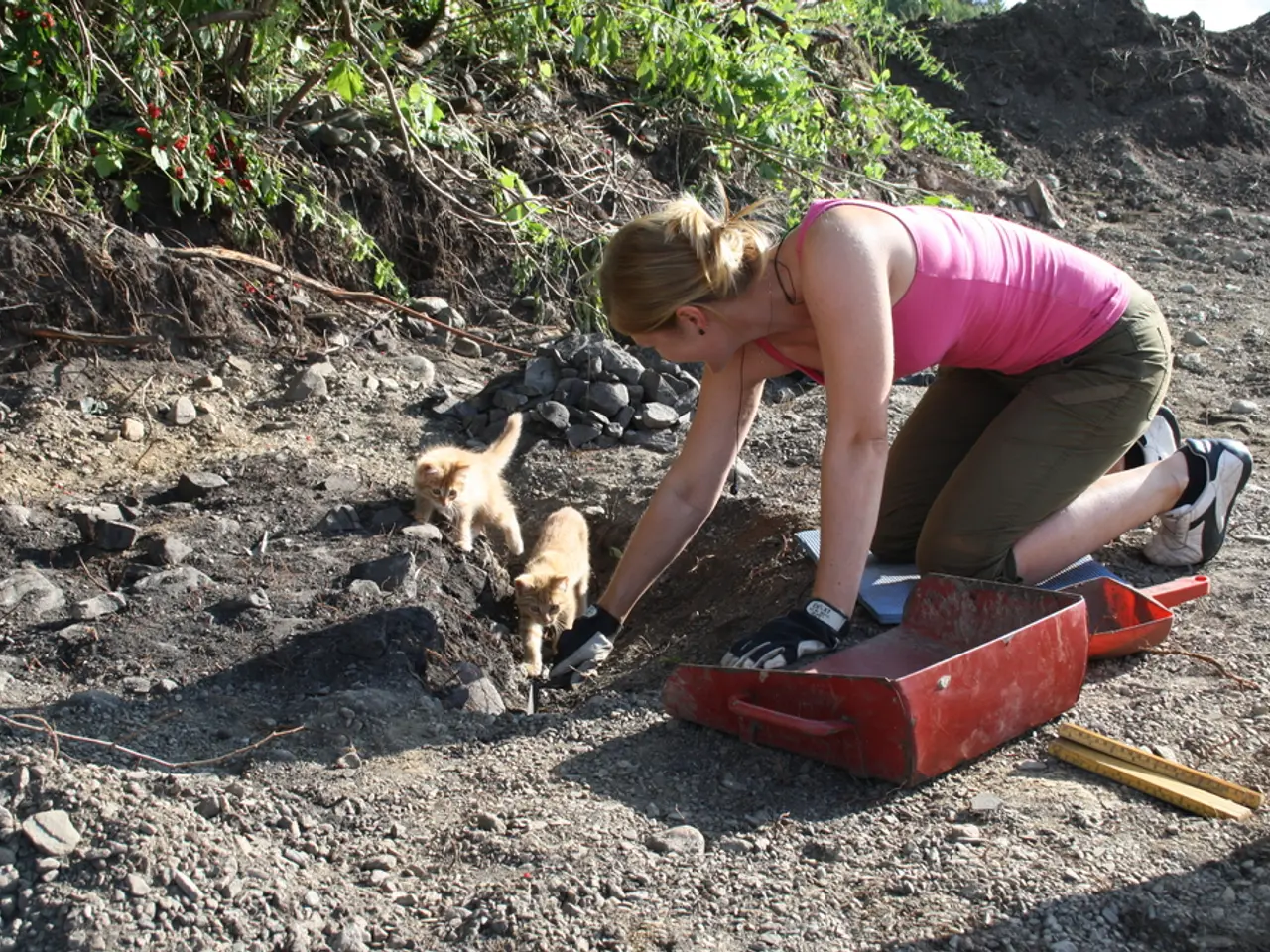Revitalizing Soil: Strategies for Enhancing Your Plants' Vitality
Revitalising Your Potted Plants: A Comprehensive Guide
If you're looking to breathe new life into your potted plants, here are some tips to help you get started.
Assessing the Condition of Your Potting Mix
Before you begin, it's essential to check the health of your potting mix. If you've had problems with disease or pests, address these issues before revitalising your mix. If the soil structure has compacted or broken down, consider amending it with natural ingredients to improve moisture retention and structure.
Sterilising Old Potting Soil
If you're looking to reuse old potting soil, it's crucial to sterilise it first. You can do this using heat-based methods like oven or microwave heating, steaming, or solarization. Solarization involves moistening the soil, sealing it in a black plastic bag, and leaving it in direct sunlight for 4 to 12 weeks. This kills many harmful pathogens but can also eliminate beneficial microbes. Oven or microwave sterilisation involves heating the soil to a temperature that kills pathogens. After sterilisation, it's recommended to rejuvenate the soil with fresh amendments like compost or fertiliser to restore nutrients and beneficial organisms.
Adding Organic Matter and Nutrients
When mixing old potting soil with compost, it's crucial to feed the microorganisms in the soil by adding diluted molasses and liquid seaweed. Compost will add valuable nutrients and increase the moisture-holding capacity of the potting mix. Adding perlite, gypsum, or lime to the soil mixture can increase its alkalinity if the pH is below 6.2.
Refreshing Your Potting Mix
If you're looking to refresh your potted plants, you can replace a portion of the existing potting mix with a combination of fresh, healthy materials. Worm castings can be added to the soil mixture as an organic fertiliser. It's recommended to use a ratio of one part compost to three to four parts potting soil to avoid compaction.
Maintaining the Ideal pH Level
It's important to do a soil pH test regularly to ensure your plants can access the nutrients in the pot. The ideal pH for most vegetables and herbs is around 6.2-6.8, with 6.4 being optimal. If you find that the pH is not within the optimal range, it's important to adjust the pH of the soil mixture to ensure your plants can access the nutrients they need.
Preventing Disease Recurrence
If you have a moldy plant, it's important to remove the affected leaves and stems and treat the plant with a fungicide to prevent the spread of the mold. If you have a moldy pot, you can clean it with a mixture of water and bleach to kill the mold and prevent it from returning. If you have a large amount of mold on the soil, you can remove it by replacing the soil with fresh, healthy soil.
Watering Your Plants
When watering your pot, if water runs out quickly from the bottom, it may indicate that the potting mix has become water repellent, and it's time to repot. It's recommended to add a slow-release fertiliser to the soil mixture, with a teaspoon of fertiliser per gallon of soil being sufficient.
Practical Tips for Budget-Conscious Gardeners
If you're on a tight budget, you can use a 50:50 mix of old and new potting mix or any other ratio you like when refreshing potting mix. For added fertility after sterilisation, some gardeners use natural additives like a "banana peel soup" (boiling banana peels with water and adding crushed eggshells) to replenish nutrients such as calcium and potassium in reused soil.
Crop Rotation
If you're growing vegetable crops in the pot, consider the importance of crop rotation to avoid a build-up of soil-borne diseases and pest problems.
Long-Term Residents
If you have a dwarf fruit tree or another long-term resident, you can keep the potting mix healthy by adding nutrients every season instead of repotting.
[1] Sterilizing Old Potting Soil for Reuse [2] Using Banana Peels in the Garden [3] Steaming Soil to Kill Disease [4] Solarizing Soil to Kill Disease [5] Microwaving Soil to Kill Disease
- Adopting a lifestyle that includes home-and-garden activities such as gardening can contribute to the improvement of soil health, as practices like sterilizing old potting soil for reuse can help maintain the health of the plants.
- Incorporating garden waste like banana peels into the home-and-garden routine can lead to the creation of nutrient-rich compost, which can help enhance soil health and overall plant growth in your potted plants.






